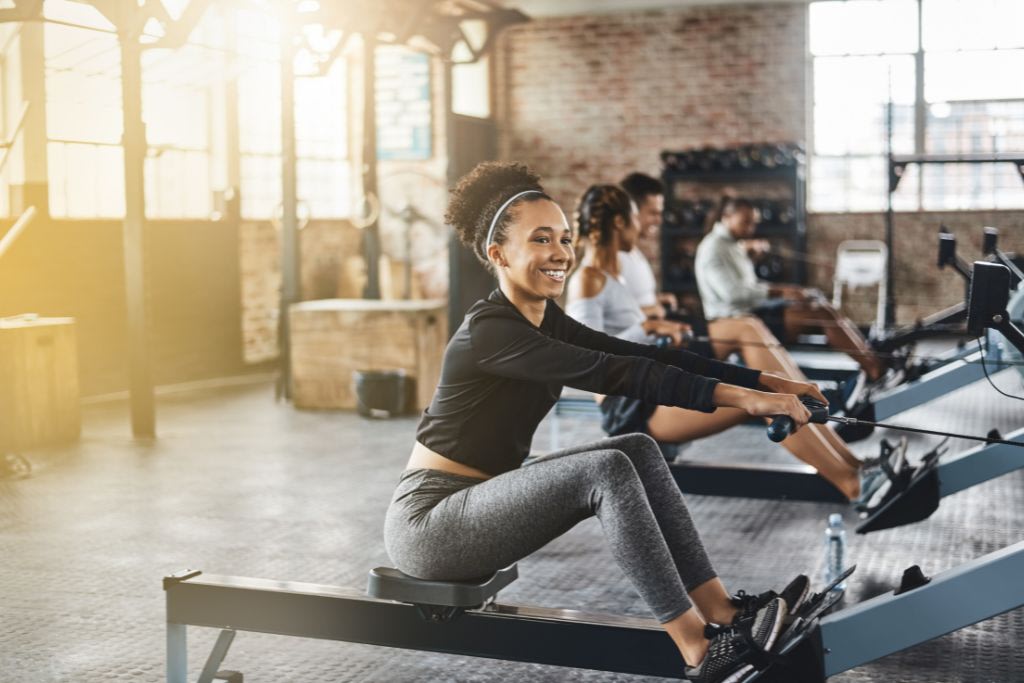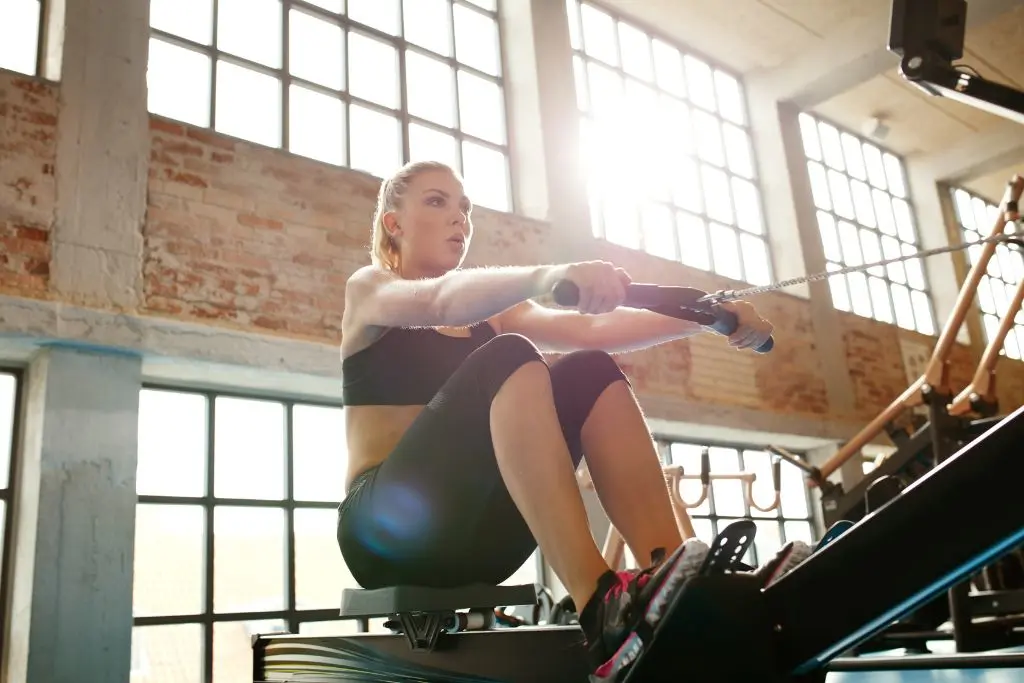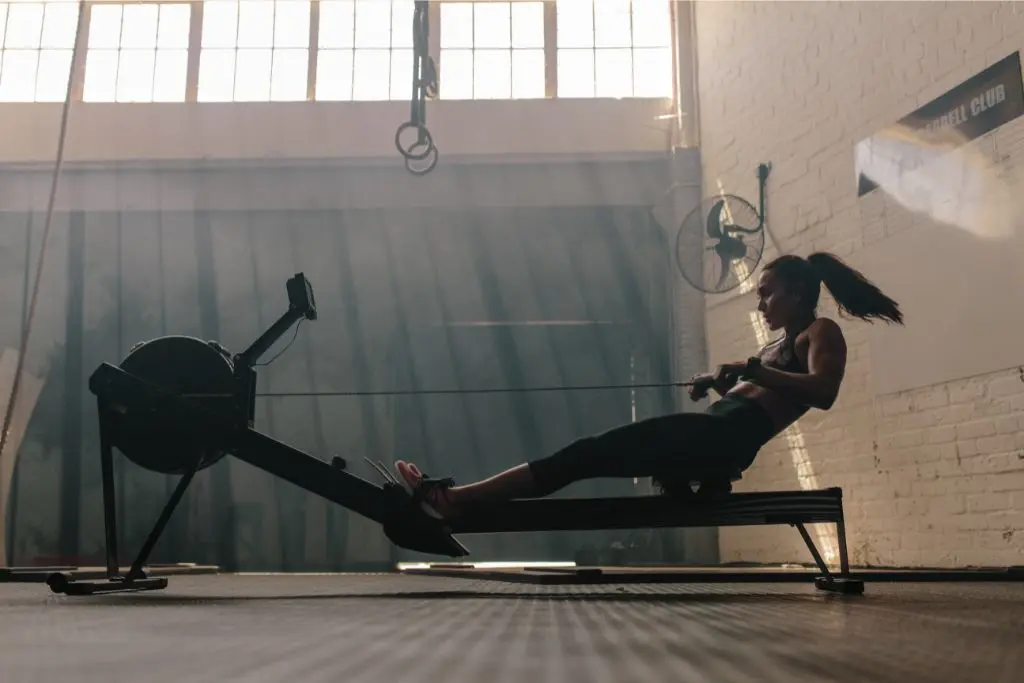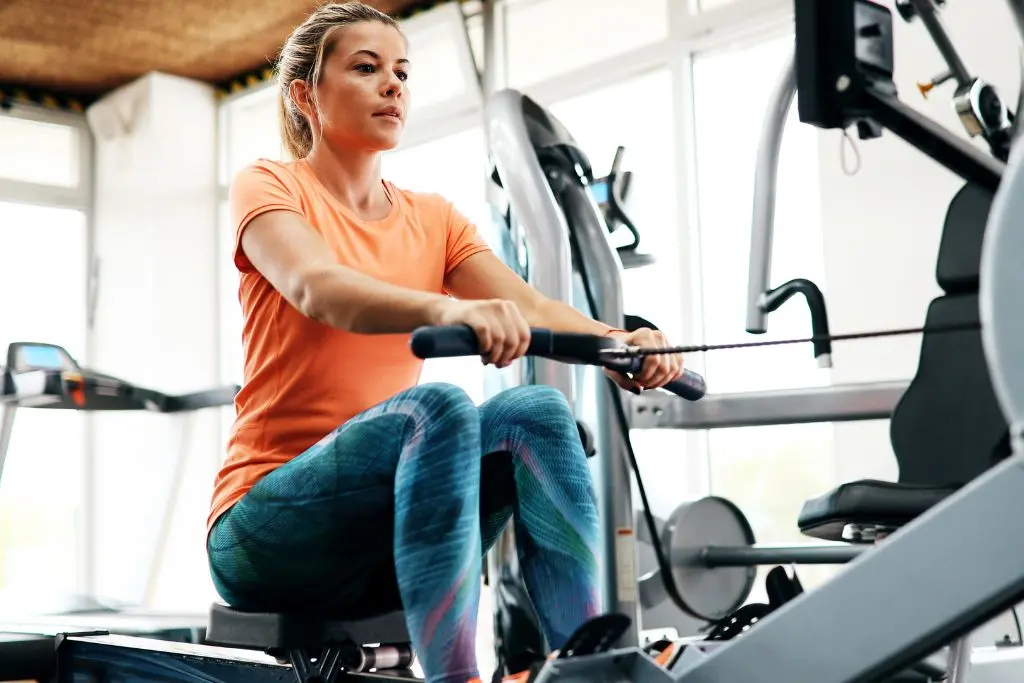Row Your Boat: 14 Benefits Of Rowing

September 22, 2023

If you were to walk into a gym, which cardio machine would be your go-to? While many of us head straight to a treadmill or bike, rowing machines (aka rowing ergs) are often overlooked, even though they offer an amazing workout with an impressive list of benefits. Here are 14 reasons why rowing should be your next cardio workout!
Great for your heart health
Being a form of cardio training, hopping on a rowing machine is a fantastic way to boost the health of your cardiovascular system and improve your heart’s ability to transport oxygen and nutrients around your body. If you’re just starting out, you can set the damper (the resistance lever on the side of the machine) to a low setting as your fitness builds. If you’re seeking a cardio challenge, a rowing erg can deliver that too - simply move the damper to a high resistance.
Improve your muscular endurance
When you hear the word ‘endurance’, it’s common to think of cardio endurance - the stamina of your heart and lungs. But muscular endurance is just as important when you’re thinking about improving your fitness holistically, and rowing definitely delivers. Muscular endurance is all about the ability of your muscles to continuously contract for extended periods of time, rather than just a few seconds for a heavy lift.
Improve your muscular strength and power
Rowing won’t build your strength in the same way that weight lifting can, but it delivers much more of a strength session than some other forms of cardio, making it an epic hybrid workout. Every single stroke requires power from your lower and upper body, especially if you’ve got the resistance on a high setting. If you’re a beginner or are still building your strength or rowing confidence, simply move the damper to a lower setting.

It’s a full-body workout
Not only can rowing build your muscular strength and endurance, but it can work you all over. People often assume rowing is an upper body workout, but anyone who has hopped on a rowing machine can tell you how much it burns your legs. In fact, the American Fitness Professionals and Associates says rowing is actually 65-75% leg work and 25-35% upper body work.
With every stroke, a significant amount of power comes from your calves, quads and glutes, as well as your arms, shoulders, chest, core and back. Where running, cycling, stair climbing or using an elliptical machine have a minimal focus on your upper body, a rowing session will work you all over.
It’s a low-impact training option
Running (and even power walking) can be quite jarring on your joints, especially if you’re doing them regularly. We love rowing for the low impact on your joints, while having a big impact on your health, fitness and strength. Low-impact training options can also be great for those who are recovering from an injury.
Low risk of injury
Because it’s low-impact and can be performed with a very basic level of strength and skill, rowing machines are an awesome place to start if you’re worried about injuring yourself. The most common rowing injury is not actually falling out of your imaginary boat, but ending up with lower back pain, so make sure you warm-up and maintain good posture (think strong, engaged core and proud shoulders) throughout each stroke. We don’t want to see any Hunchback of Notre Dame vibes going on.
It’s beginner friendly
Starting out on your fitness journey or coming back from a break can feel pretty intimidating, so if you’re wanting a machine you can walk towards with confidence, a rowing erg gets a big thumbs up from us. Sit down, adjust the foot pedals if you need to, tighten the straps, grab the handles and you’re off! Yes, rowing machines can deliver a super challenging workout for your cardio fitness and strength, but you don’t need high fitness or strength to get started.

Many ways measure progress and improve
Don’t be fooled into thinking rowing is a boring or aimless way to train. If you’re in the mood for a LISS session (low-intensity steady state cardio), go for gold, but if you’re wanting your Sweat session to have a little more fire, set yourself benchmark fitness tests and see what you’re made of.
Rowing machines usually have a digital screens and can measure your workout by time, distance, speed and calories burned. Here are some rowing workout ideas to challenge yoursel to:
Row 500m as fast as you can
Burn 10 calories as fast as you can
Row as far as you can in two minutes
As you get the hang of it, you’ll also start to realise that how you row has a big impact on your power, speed and efficiency. With practice, you’ll quickly see all of these elements improve, but also your technique. If you’re in a gym, the staff should be able to give you great pointers to master your form!
Good for mobility
Want to limber up and improve your mobility? Rowing can help with that. One study from 2014 aimed to evaluate muscle function and physical fitness in relation to muscle balance patterns using rowing machines. After subjects performed rowing exercises three times a week for eight weeks, significant improvement was observed in all aspects of fitness, and every joint improved by more than 30%.
It’s versatile and adaptable
With rowing ergs, you get to decide what kind of workout you want and how challenging it is. At a basic level, rowing can be like a gentle jog where you sit down and row at a low-intensity and steady pace for your entire workout. It can also be a standalone HIIT session, where you row in short high-intensity bursts. The Tabata format is a great option, where you would row for 20 seconds at your maximum effort, followed by 10 seconds of rest, repeated for at least four minutes.
You can incorporate bursts of rowing into a strength circuit for variety and a blast of cardio, use it as a warm-up, cool-down, or even a gentle active recovery session. We’ve even seen people use the moving seat in a similar way to the moving platform on a reformer Pilates machine!

Great at-home equipment option
Rowing machines, treadmills, stationary bikes and elliptical machines all take up quite a bit of space, but with most rowing ergs, you can fold them up and store them vertically when they’re not in use.
Because rowing is a low-impact training style, your workout will be a whole lot quieter than running on a treadmill if you’re trying to minimise noise when you exercise.
Can improve your posture
Because of how much rowing works your core, shoulders and back, it can be a great way to strengthen your entire posterior chain (the muscles down the back of your body), which can do wonders for your posture. During each rowing stroke, keeping your posture strong is essential for good form, which can help you to make good posture a habit, too.
It’s suitable for those who are visually impaired
As highlighted in research from 2015, the majority of people with visual impairments don’t participate in sports due to efficiency and safety issues. Rowing is a safe and effective option for a full-body workout! In their study of twenty visually impaired subjects, fat mass and total body fat percentage decreased significantly after six weeks of rowing five days a week, and back strength and trunk flexion also increased significantly.
Mood and mind booster
Like any form of exercise, getting your row on will boost your circulation which is beneficial for your brain health and cognitive function. It can also be an amazing way to lift your mood, manage stress and take care of your mental wellbeing due to the release of those feel-good endorphins. Rowing can be whatever you need it to be to feel better - a meditative cruise downstream or an intense blast to let off some steam.
Sit down, strap in, hold on and get ready for a powerful cardio and strength workout. When there are so many benefits to be gained, rowing machines definitely aren’t reserved just for rowers - they’re for everyone.

A more empowered you starts with Sweat, and our editorial team is here to bring you the latest fitness tips, trainer recommendations, wellbeing news, nutritional advice, nourishing recipes and free workouts.
* Disclaimer: This blog post is not intended to replace the advice of a medical professional. The above information should not be used to diagnose, treat, or prevent any disease or medical condition. Please consult your doctor before making any changes to your diet, sleep methods, daily activity, or fitness routine. Sweat assumes no responsibility for any personal injury or damage sustained by any recommendations, opinions, or advice given in this article.
Fitness